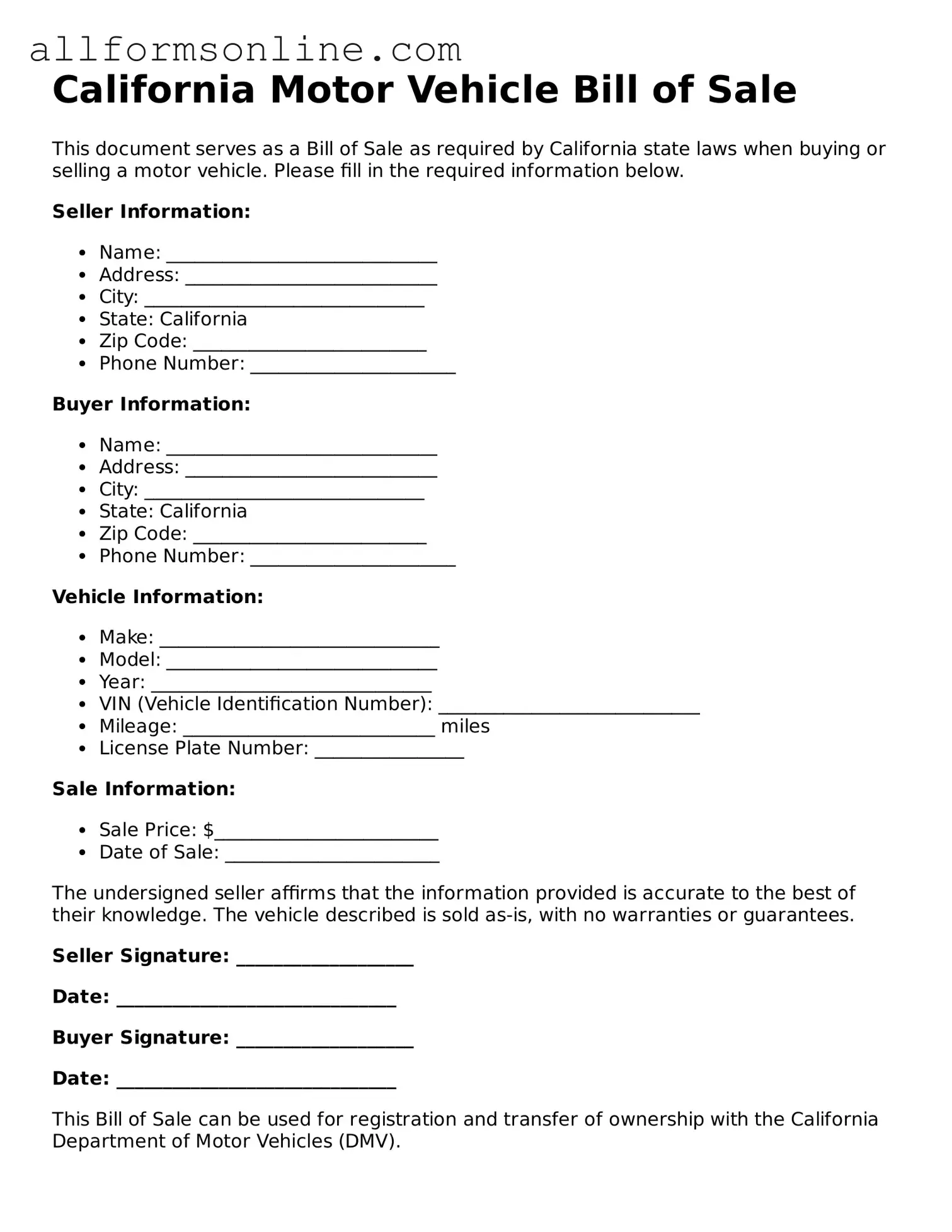What is a California Motor Vehicle Bill of Sale?
The California Motor Vehicle Bill of Sale is a legal document that records the sale of a vehicle between a buyer and a seller. It serves as proof of the transaction and includes important details about the vehicle, such as the make, model, year, and Vehicle Identification Number (VIN). This document is essential for both parties to ensure a smooth transfer of ownership.
Is a Bill of Sale required in California?
While a Bill of Sale is not legally required to complete a vehicle sale in California, it is highly recommended. Having a Bill of Sale provides a written record of the transaction, which can be useful for tax purposes, registration, and any future disputes that may arise regarding ownership.
What information is needed to complete the Bill of Sale?
To complete the California Motor Vehicle Bill of Sale, you will need the following information: the names and addresses of both the buyer and the seller, the vehicle's make, model, year, and VIN, the sale price, and the date of the sale. Both parties should sign the document to validate the transaction.
Can I use a generic Bill of Sale form?
While you can use a generic Bill of Sale form, it is advisable to use the specific California Motor Vehicle Bill of Sale. This ensures that all necessary information is included and complies with California state requirements, making it easier for both parties during the registration process.
What should I do with the Bill of Sale after the sale?
After the sale, both the buyer and the seller should keep a copy of the Bill of Sale for their records. The buyer will need it for vehicle registration and to prove ownership. The seller may need it to confirm the sale and for tax reporting purposes.
Does the Bill of Sale need to be notarized?
No, the California Motor Vehicle Bill of Sale does not need to be notarized. However, both parties should sign the document in the presence of each other to confirm the authenticity of the transaction. Notarization may provide additional security but is not a requirement.
What if there are issues with the vehicle after the sale?
If issues arise after the sale, the Bill of Sale can serve as evidence of the transaction and the terms agreed upon. However, it is important to note that the Bill of Sale typically includes a disclaimer stating that the vehicle is sold "as-is," meaning the seller is not responsible for any defects or problems that occur after the sale.
Where can I obtain a California Motor Vehicle Bill of Sale form?
You can obtain the California Motor Vehicle Bill of Sale form from the California Department of Motor Vehicles (DMV) website or at any local DMV office. Additionally, many online legal document services provide templates that can be customized to meet your needs.
